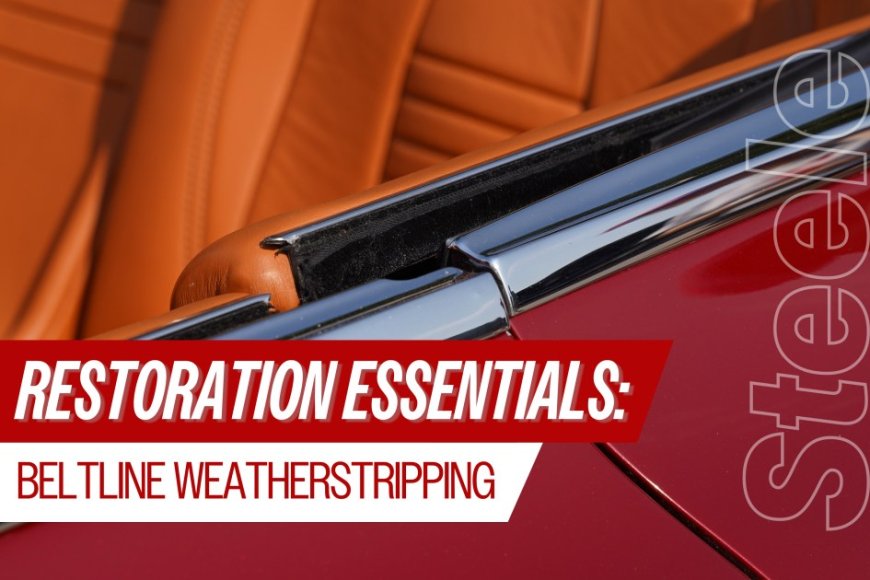Seal It Right: Why Proper Beltline Weatherstripping Matters
Restoring a classic car is as much about performance and reliability as it is about preserving its charm – no computer-aided driving or adaptive cruise control. One essential yet often overlooked element in a restoration project is beltline weatherstripping. These are the strips that wipe the window as it’s lowered into the door. Also known… The post Seal It Right: Why Proper Beltline Weatherstripping Matters appeared first on The Online Automotive Marketplace.

Restoring a classic car is as much about performance and reliability as it is about preserving its charm – no computer-aided driving or adaptive cruise control.
One essential yet often overlooked element in a restoration project is beltline weatherstripping. These are the strips that wipe the window as it’s lowered into the door. Also known as window sweeps, beltline weatherstripping plays a pivotal role in your vehicle’s overall enjoyment by keeping it leak-free, reducing noise, and improving insulation.
What Is The Purpose Of Beltline Weatherstripping?
Beltline weatherstripping consists of inner and outer strips that seal the gap between the door panel and the window. This prevents water, dirt, and debris from entering the door cavity, protecting against water collection and windows rattling. A well-installed beltline not only safeguards your car’s structural integrity but also offers a quieter, more comfortable ride by minimizing wind noise and temperature fluctuations inside the cabin.
The importance of a well-fitted beltline cannot be overstated. These components are often vehicle-specific, ensuring a perfect match for the door’s contour. If you’re working on a rare or custom car, universal beltline weatherstripping is available, offering the same benefits with the flexibility to be shaped as needed.
Installation basics
Installing beltline weatherstripping might seem daunting, but it can be simplified with the right tools and techniques. Below are the primary steps to ensure a proper fit.
Preparation:

You’ll likely need to remove the inner door panel to access the old weatherstripping as it follows the glass into the door. Inspect the area for rust or debris and clean it thoroughly. If the old beltline is cracked, brittle, or missing sections, it’s time for a replacement.
Shaping The Beltline:

If your new beltline needs bending to fit the door contour, patience is key. Use tools like a cam or plywood template to create the desired curvature. Gently work the material, ensuring the stainless bead slides smoothly without kinking. Use smooth, consistent and light pressure to bend it. Cutting excess material with tin snips can provide a clean finish.
Attachment Options – Glue:

Beltline weatherstripping can be installed using pre-installed clips or adhesive. For adhesive installation, apply a thin layer of 3M urethane adhesive to the cleaned surface using a popsicle stick for precision. Press the beltline into place and allow it to cure for 24 hours.
Attachment Options – Clipping Into Place

For clip-based installations, align the clips with the door’s pre-drilled holes. Push the beltline until you hear it lock securely in place. Repeat the process for both the inner and outer strips.
Conclusion
By sealing out unwanted elements and minimizing noise, these components ensure a pleasant driving experience while preserving your vehicle’s value. Whether you’re restoring a vintage ride or building a custom masterpiece, installing quality beltline weatherstripping is an investment that pays off every time you hit the road.
The post Seal It Right: Why Proper Beltline Weatherstripping Matters appeared first on The Online Automotive Marketplace.











































